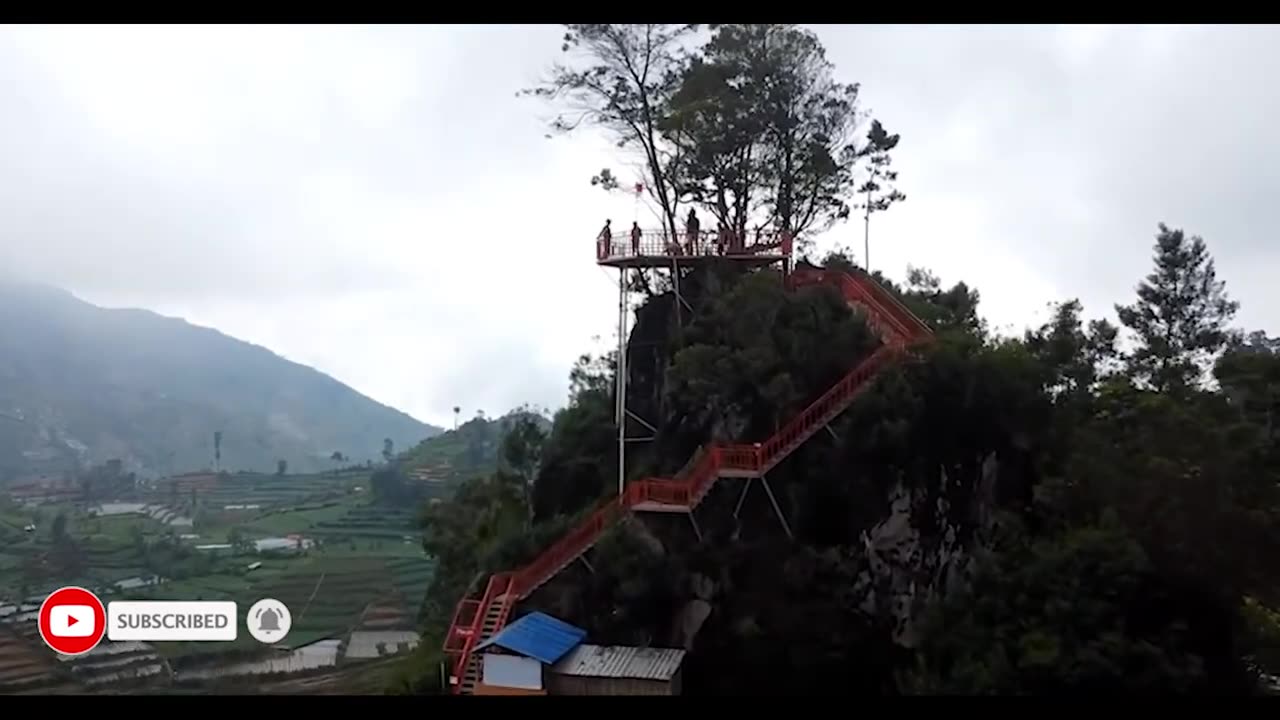Premium Only Content

beautiful dieng
Dieng Plateau (Javanese: ꦣꦶꦲꦾꦁ; Javanese pronunciation: [diyéng]) is a plateau in Central Java, Indonesia that forms the floor of the caldera complex on the Dieng Volcanic Complex. Administratively, this plateau is included in the territory of Banjarnegara Regency and Wonosobo Regency. Covers agricultural areas that have a subtropical climate with high levels of rainfall.[1]
Dieng is surrounded by a series of mountains that stretch about 6 km (4 miles) from north to south and 14 km (9 miles) from west to east.[2][3] Dieng is the highest plateau on the island of Java, which has an average elevation of more than 2,100 meters above sea level
Dieng is a plateau surrounded by volcanic complexes. At first this part of the plains was a former ancient lake that came from damming the lava that came out of the surrounding volcanic eruptions. The occurrence of the sedimentation process has an impact on the drying up of the entire lake area which gradually turns into plains.[8][9]
The landscape of Dieng, which is a plateau, is related to land requirements and the concept of sacred space in Hindu and Buddhist cosmology. In its time this plain was a religious center and the site of the discovery of 400 temple buildings.[10] It is not known exactly when the temples were built. The temples found at Dieng were found to have the oldest known stone structures in Java.[11] Historically, the temples in Dieng date back to the Mataram Kingdom era (8th century) and some South Indian architectural influences (6th century).[11]
The choice of the location of the sacred building in Dieng during the ancient Javanese era was related to the worship of a god who was believed to reside in the mountain and as a place for rishis to perform their rituals of the cult of the gods. The location of the sacred building does not only consider the fertile location, but also pays attention to the god who is worshiped. Based on environmental conditions, the sacred buildings in Dieng are predominantly dedicated to the worship of Shiva.[12] Archaeological remains in Dieng generally tend to be of a Shivaistic nature, this is shown in the many findings of phallus, yoni, statues and inscriptions indicating that Shiva is positioned as the main deity. The inscriptions found in Dieng contain tributes and praises to Shiva which are usually found at each opening of the inscription. This evidence confirms that the main deity worshiped in Dieng is Shiva.[12]
Shiva is a god who always meditates, so a location is needed that is quiet and far from worldly things. These locations can be found at high altitudes because they encourage the creation of a sacred atmosphere. Dieng is a plateau that has many springs and is surrounded by mountains so that it is possible to become a sacred place. In Hindu cosmology, Shiva is a deity who inhabits a sacred mountain called Kailash.[13] He is a god who is synonymous with mountains and has another name as Girisa or Girindra which means "god of the mountain".[14]
In Javanese cosmology, mountain is a symbol of the cosmos where the earth and heaven meet.[15] The mountain becomes a cosmological symbol in the sense of belief in the orderliness of the world and the universe.[16] According to the Sthapatya Veda, the architecture of a sacred building is a reflection of the cosmos.[17] This concept shows that the landscape of the Dieng plateau is a cosmic axis that connects the world with divine nature
-
 2:44:05
2:44:05
TheSaltyCracker
9 hours agoDeep State Set Up Trump ReeEEStream Stream 03-26-25
154K264 -
 31:34
31:34
Friday Beers
14 hours ago $3.65 earnedWe Drank 12 Beers and Solved the Case of 9 Dead Hikers
40.4K8 -
 18:11
18:11
Nick Shirley
9 hours ago $7.89 earnedAsking The Irish If They Will Vote for Conor McGregor 🇮🇪
55.6K58 -
 7:10:15
7:10:15
Illyes Jr Gaming
10 hours agoIt's Wednesday! Let's Hit 300 Followers TONIGHT!
45K3 -
 2:40:58
2:40:58
Joker Effect
7 hours agoIs our government safe?***Streamer News***DRAMA***RUMBLE GETTING LEVERAGE***GAMING
63.4K7 -
 14:55
14:55
T-SPLY
11 hours agoDemocrats Accused Of Not Calling Out Joe Bidens Security Disasters
47.3K12 -
 5:08:38
5:08:38
ZachTheRipper
7 hours agoWe Back With A Passion - 0/20 Subs - Interactive Streamer - #RumbleGaming
38.1K -
 16:19
16:19
Tundra Tactical
10 hours ago $1.49 earnedGEN Z Brit 3D Prints a WORKING Gun!
31.1K8 -
 48:01
48:01
Man in America
15 hours agoWHEN WILL THE ARRESTS BEGIN?! w/ General Michael Flynn
41.1K66 -
 3:20:40
3:20:40
BSparksGaming
7 hours agoNear the End? Assassin's Creed Shadows Campaign
24.2K2